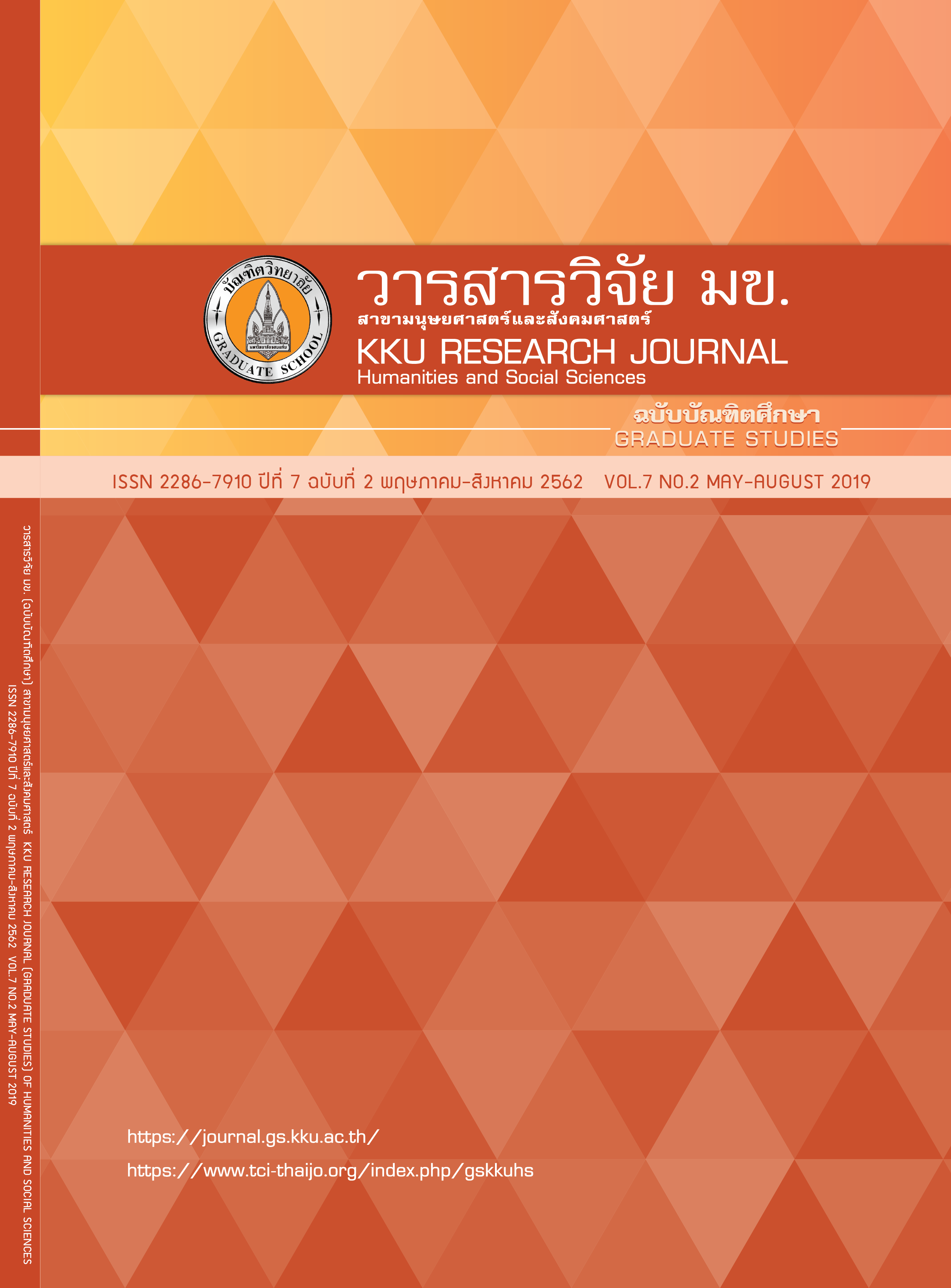The Model of Student Care and Support System for Student Health and Hygiene
Keywords:
Drive of model, Student care and Support system, Health and hygieneAbstract
The objectives of this descriptive research were to study: 1) To study the current state of the student care and support system, Include leadership of school administrators, Teacher collaboration with administrators, Parental Involvement with School, cooperation of student care and support system Between administrators, teachers, parents, and quality students at risk. The school affiliation under Secondary Education Office Service Area 29. (Ubon Ratchathani) 2) To create a model by studying relationships between the quality of students at risk. under Secondary Education Office Service Area 29. (Ubon Ratchathani) It depends on the 4 factors, Leadership of school administrators, Teacher collaboration with administrators, Parental involvement with school, Cooperation in the student care and support system, between administrators, teachers and parents. 3) Trial and evaluate implementation The model of student care and support system for student health and hygiene in Ubon Ratchathani province. Use research mixed methods between the quantitative research, qualitative research and . The target group used in the study phase 1 : Study the current state of 30 director, 30 teachers , and 30 parents. randomly selected according to the stratification of individuals which divided into 3 groups. Phase 2 : Create a model the target group of 5 expert. By choosing a specific. Phase 3 : Trial and Evaluation the target group of 30 Risky students. By choosing a specific. The instruments used in the research were : questionnaire, Evaluation form, Meeting record, student behavior assessment form and structured observation with the reliability at 0.88. The data were analyzed using Structural Equation Model (SEM) To analyze path effects using LISRELL and Pearson's Correlation. The research result found: 1. The current state of the student care and support system. The results showed that. There are 5 factors to consider: executive leadership Teacher collaboration with administrators, Parental Involvement with School Collaboration in facilitating student support system between administrators, teachers, parents and quality risky students. Overall, there is an estimate. See a lot in every aspect. 2. The create a model by study relationship between the quality risky students. , The results showed that.The results of the fit was at the level agreedand overall consistency.The model of student welfare support system for student health and hygiene. 3. The Trial and Evaluation of Model. The results showed that quality students Social relations are the most important. The quality of the risky students was positively correlated with the leadership of the school administrators, significantly influencing the teachers' cooperation R2= 0.90 and collaboration in supporting the student welfare system for reproductive health. R2 = 0.84 influence indirectly on parents' cooperation with schools. R2 = 0.86 and collaboration to drive student support system for reproductive health of students. R2 = 0.84.
References
Bangkok: Ramathibodi Hospital, 2013.
2. Prapatson Pree-iam. Sex education school And life skills to prevent
pregnancy problems in teens. Mahasarakham Rajabhat University, 2557. Thai.
3. Robbins, Stephen P. Essentials of Organizational Behavior. (4thed.).
Englewood Cliff,. NJ: Prentice – Hall, 1994.
4. Ambrose M. L, Kulik T C. Ole Friends, New Faces: Motivation Research
in the 1990, Journal of Management. 25(3): 231-292, 1999.
5. Hoy W K, Miskel C G Educational Administration: Theory Research
and Practice. 3rd ed. New York: Random House, 1987.
6. Cherrington D J. Organizational Behavior. Massachusetts:
Allyn and Bacon, 1994.
7. Luthans F. Organizational Behavior. Singapore: McGraw-Hill Book
Co-Singapore, 1992.
8. Kraft R T, Pradro S Educational Planning as a Vehicle for System
Change, Educational Technology, 11(5), 1977.
9. Epstein J L et al. School, Family and Community Partnerships.
Your Handbook for action. Thousand Oaks, California :
Corwin Press, Inc, 1997.
10. Davis K, New strom J. W. Human behavior at work:
Organizational behavior. (8th ed.). New York: McGraw-Hill, 1994.
11. Arnstein S R. Ladder of Citizen Participation. Journal of American
Institute of Planners. 35(4): 216-24, 1991.




